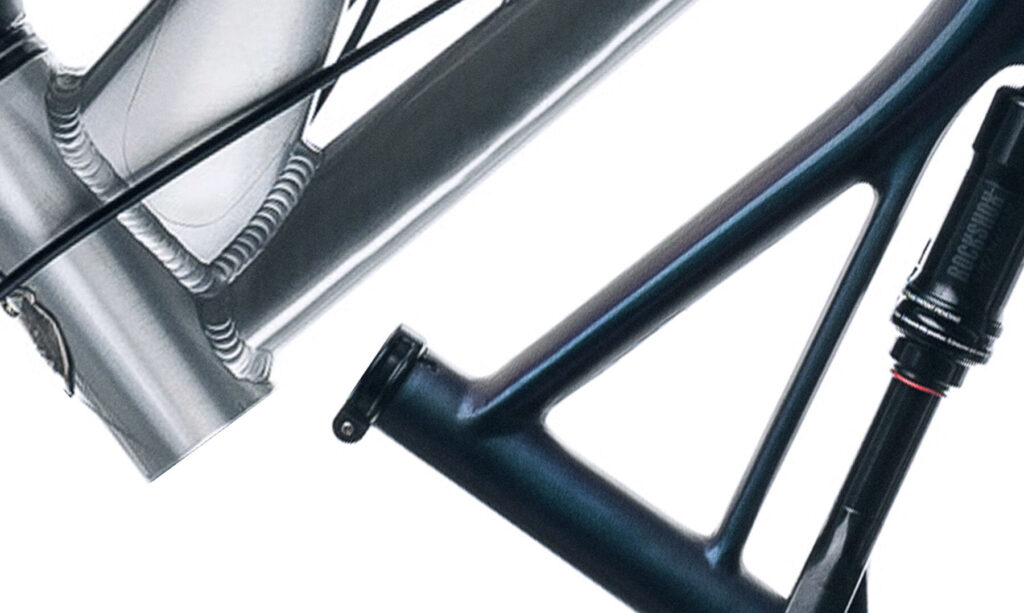Understanding Mountain Bike Frame Materials
Choosing the right frame material for your mountain bike can feel like a daunting task. With various options available, each with its pros and cons, how do you know which one will best suit your needs? Let’s dive into the world of mountain bike frame materials, exploring their characteristics so you can make an informed decision.
Types of Frame Materials
When it comes to mountain bike frames, you’ll find a few main materials dominating the market. Here’s a quick look at each one:
- Aluminum
- Carbon Fiber
- Steel
- Titanium
Aluminum Frames
Aluminum is probably the most common material used in mountain bike frames. It’s lightweight, relatively affordable, and offers a decent balance between strength and stiffness.
One of the benefits of aluminum is its resistance to rust, making it a solid choice for anyone riding in wet conditions. If you ever squeeze your bike through muddy trails, you’ll appreciate this trait.
On the flip side, aluminum can have a harsher ride compared to other materials because it transmits more vibrations from the trail. If you get sensitive on rough paths, you might want to consider other options or look for models with built-in vibration dampening features.
Carbon Fiber Frames
Now, carbon fiber is like the cool kid in the mountain biking world. It’s incredibly lightweight and can be molded into aerodynamic shapes. Not only that, but carbon also absorbs vibrations amazingly well, so you’ll enjoy a smooth ride even on the bumpiest terrain.
However, there are some caveats. Carbon frames can be quite pricey, which may not fit everyone’s budget. They can also be more delicate than aluminum, meaning you’ll need to be a bit more careful when handling them. A tiny crack in the frame could spell disaster, so proper care is essential.
Steel Frames
Ah, steel. It’s the classic choice, and for a good reason. Steel frames are often praised for their durability and ride quality. They can handle a good amount of stress without having the fear of breaking under pressure.
Steel frames are heavier compared to aluminum or carbon but offer a unique, lively ride that many enthusiasts appreciate. Some mountain bikers actually prefer this ride quality, finding it gives a more connected feel to the trail.
The downside? If you are looking for something lightweight for climbing up steep hills, steel might not be your best option. But hey, if you enjoy a good workout, then that weight might just add another layer to your adventure.
Titanium Frames
Titanium is like the luxury option on the menu – it combines lightweight properties with strength and durability. A titanium frame can last a lifetime, which is a huge selling point for many cyclists.
Plus, it won’t rust like steel and has a ride quality that many describe as “magic.” Seriously, it’s like riding a cloud. But, of course, with all that goodness comes a hefty price tag. Not everyone can splurge on a titanium frame, so you need to consider whether the investment fits your biking style.
Factors to Consider When Choosing a Frame Material
Your Riding Style
Your riding style plays a big role in determining which frame material is right for you. Do you love climbing mountains, racing down hills, or cruising through the neighborhood? Each style may favor a different material:
- If you love cross-country riding, lightweight materials like carbon fiber or aluminum might suit you.
- For downhill riding, a sturdy steel frame can handle the aggressive terrain.
- If you are into endurance events, consider the comfort of a titanium frame.
Weight Considerations
Weight is a crucial factor, especially if you’re planning on tackling hills or long distances. In general, lighter frames will help you climb faster and make riding more manageable. However, don’t just chase the lightest frame; think about the benefits each material offers.
Durability and Maintenance
You want a bike that can withstand the elements and your riding habits. Aluminum and titanium typically require less maintenance than steel, which can rust if it’s not cared for properly. With carbon, you need to be careful about impacts that can cause damage.
Budget
Your budget can significantly influence your choice of frame material. Aluminum offers a more affordable option, while carbon fiber and titanium can take quite a toll on your wallet. Steel frames often fall in the mid-range but can vary based on type and brand.
Comfort and Ride Quality
Ride quality is subjective and varies from one rider to another. Some prefer the stiffness of aluminum for quick response while others enjoy the plush ride that comes with a steel or titanium frame. Think about what feels right for you during your rides.
Testing Before You Buy
Once you have a good idea of what materials you’re interested in, head to your local bike shop and test ride different frames. The feel of a bike can never be understood fully until you are on the trail. Take your time, try various models, and see how each material interacts with your riding style.
Final Thoughts
Choosing the right mountain bike frame material doesn’t have to be overwhelming. It all boils down to understanding your riding style, budget, and what you prioritize in a bike. Whether you lean toward aluminum, carbon fiber, steel, or titanium, be sure to take the time to evaluate what works best for you.
In my own cycling adventures, I have discovered that nothing beats the joy of finding a bike that feels like an extension of yourself. So, enjoy the process, and soon you’ll be zipping down trails with confidence. Happy riding!






